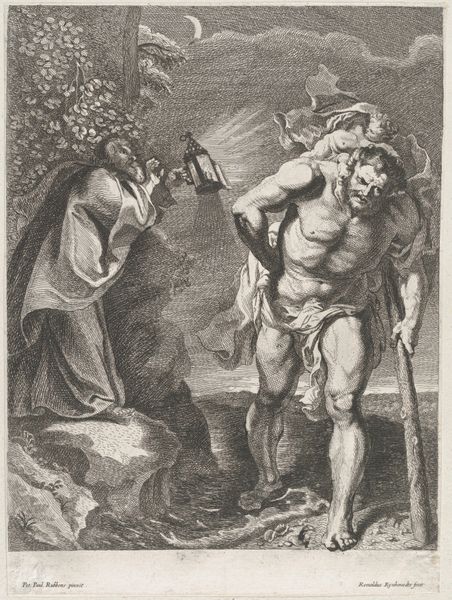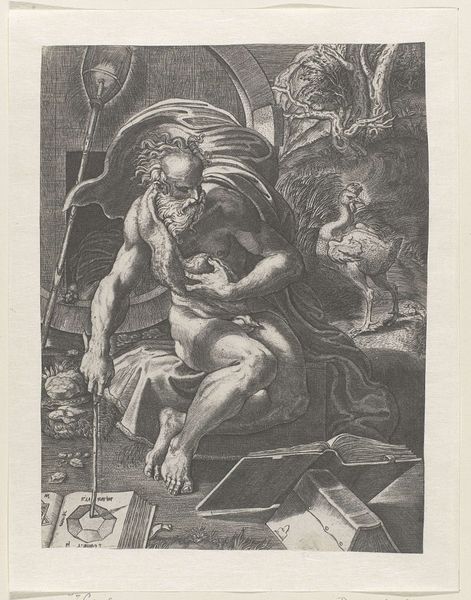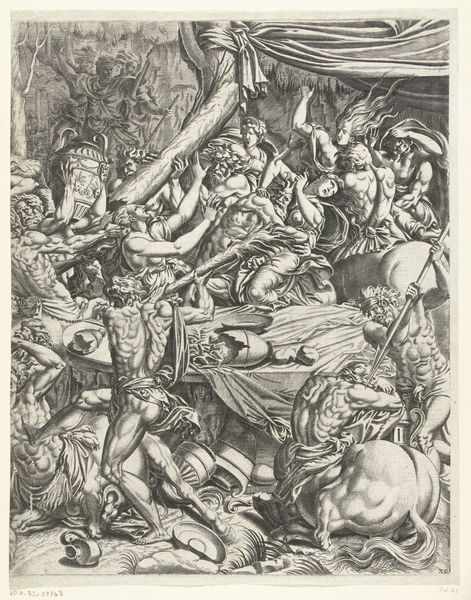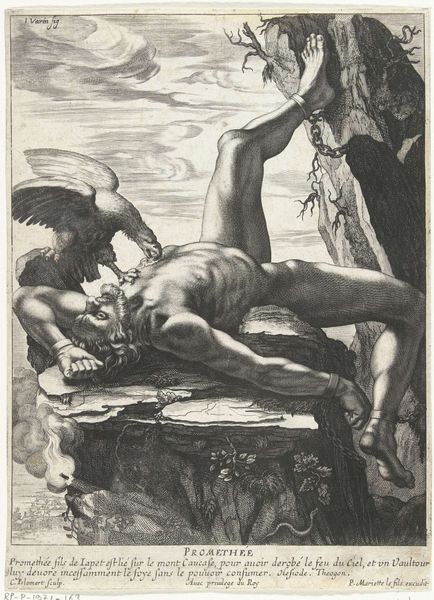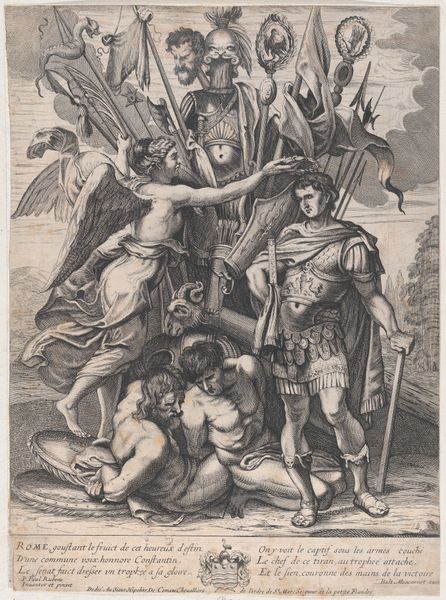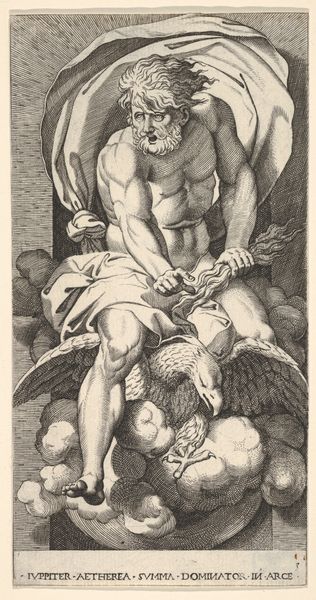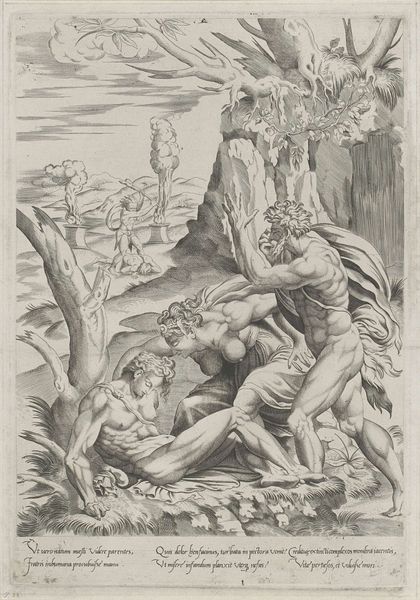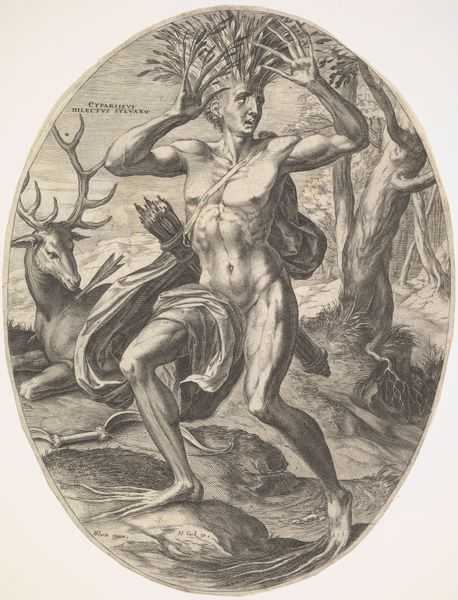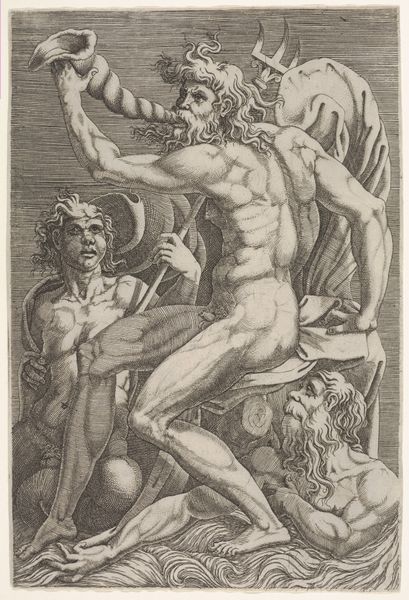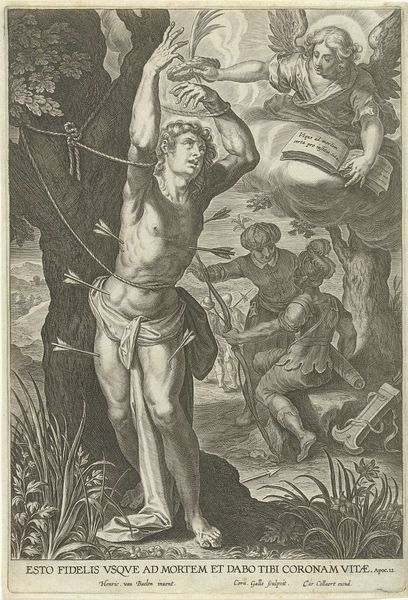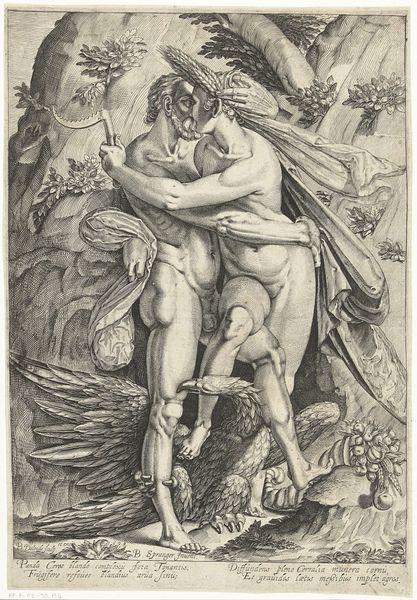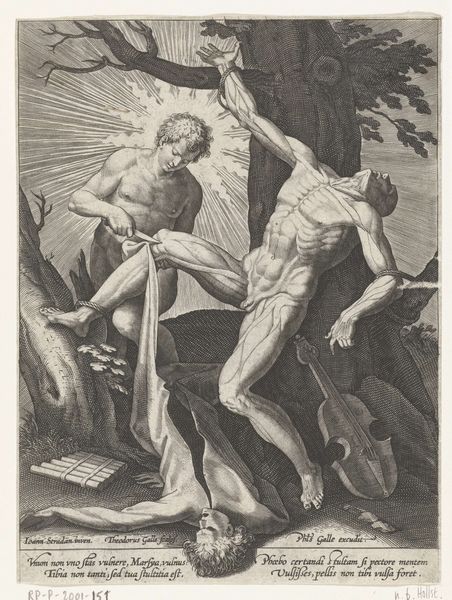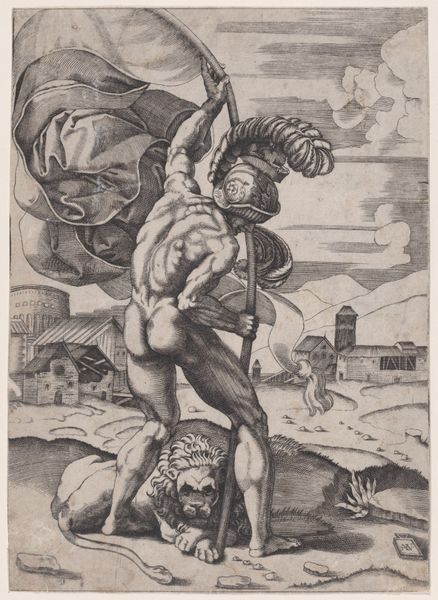
drawing, print, engraving
#
drawing
#
medieval
#
pen drawing
# print
#
pen illustration
#
pen sketch
#
mannerism
#
figuration
#
linework heavy
#
pen-ink sketch
#
pen work
#
history-painting
#
engraving
Dimensions: height 353 mm, width 258 mm
Copyright: Rijks Museum: Open Domain
Curator: Look at this print by Dirck Volckertsz Coornhert, dating back to 1554. It’s entitled "Hercules and Cacus," now held at the Rijksmuseum. The piece employs engraving to vividly depict a scene of mythological conflict. Editor: Wow, the linework is so intense! There's an incredible sense of violence radiating from this piece. It feels raw, like a struggle against primal forces, doesn't it? The composition feels intentionally chaotic, amplifying the tension. Curator: Absolutely. Coornhert’s decision to portray this specific myth is telling. Hercules’ victory over Cacus was often used as an allegory for good triumphing over evil, or order over chaos. In the context of the 16th century, this had deep social and political resonance. Editor: I immediately key in on the grotesque details, particularly Cacus's devilish portrayal and that eerie figure hanging in the background, which look phantasmagorical, almost like something out of a nightmare. What does this decision about visual language reflect about Coornhert’s potential audience and what the piece communicates about cultural anxiety or a fascination with violence? Curator: It's certainly tapping into existing societal anxieties. Consider how printmaking allowed for the widespread distribution of imagery. This wasn't just art for an elite few; prints reached a broader public. Depicting Hercules, a hero of immense strength and virtue, defeating a monstrous figure like Cacus reinforced the importance of moral order and societal stability at a time of significant religious and political upheaval. Editor: This goes beyond a simple moral lesson. The raw energy Coornhert captured could be seen as reflective of the broader climate of social change at the time. We must ask how it functioned for and was consumed by a diverse population and which political purpose was emphasized, perhaps inadvertently, through its consumption. Curator: A fascinating point. Seeing the piece in terms of power, public message, and influence helps to clarify our understanding of its potential to serve as propaganda for one faction. Editor: Right, so analyzing a piece such as "Hercules and Cacus" reminds us that there can be complex and nuanced socio-historical conditions imbedded in what appear at first glance to be simplistic illustrations. Curator: Precisely. Hopefully our insights bring you closer to the intricate ways this print speaks volumes beyond its immediate, brutal imagery. Editor: Agreed, recognizing these dialogues opens doors to broader cultural insights for new museum visitors.
Comments
No comments
Be the first to comment and join the conversation on the ultimate creative platform.
